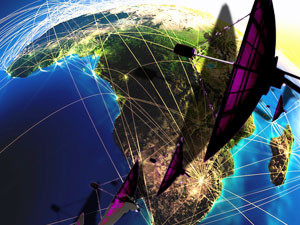
With Africa increasingly becoming a global gem for corporate investment, 2013 is set to be another dynamic year on the telecommunications front.
ICT research and analysis firm the International Data Corporation (IDC) takes a look at what is in store for the African telecoms market on the back of changes and developments that took place last year.
Regulatory environment advances, the growth of smartphones, a competitive landscape and LTE rollout, are all factors that come into play when looking into the future, says the IDC.
Spiwe Chireka, senior telecoms analyst at IDC, says operators will increasingly look at monetising investments - especially those surrounding data - this year. She says technologies that were traditionally deemed unprofitable are fast becoming cash cows.
Here are the IDC's top 10 predictions for the African telecoms market in 2013:
1. 2013 will be "the year of the smartphone": Chireka says content is key. "Service providers will aggressively drive content to generate revenue and return on investment."
2. Long-term evolution (LTE) will gain momentum as a mainstream technology: Africa has already surpassed industry expectations, with commercial launches in SA, Africa, Namibia and Angola. Other key markets are in advanced stages of testing, and expected to roll out commercial LTE this year.
3. Consolidation-driven mergers and acquisition activity will dominate: Dominant operators are shopping for merger and acquisition (M&A) opportunities in existing markets, and smaller players are likely to sell as revenue growth continues to shrink.
4. Africa's first "Everything Everywhere" is on the horizon: Chireka says, with Vodacom and MTN dominating the South African mobile market, and Cell C and 8ta in a "difficult position", an M&A - like the UK's T-Mobile and Orange union - makes sense.
5. Satellite connectivity will remain a force to be reckoned with: Satellite technology has seen a number of improvements and, with fibre rollout slow and often economically unfeasible, there is a growth in the demand for satellite connectivity.
6. Rural connectivity will become an emerging reality: Urban markets are saturated and there is a growing number of government-driven projects (such as in Zambia, Uganda, Mozambique and the Central African Republic) and growth in infrastructure sharing.
7. WiFi will emerge as a viable complementary offering to 3G and LTE: The IDC expects that, with burgeoning demand for 3G services and consequent struggles by service providers to meet this demand, service providers will offload most of their 3G subscribers onto WiFi networks - especially for nomadic data access.
8. The enterprise sector will become more delineated, with providers increasingly focused on the small and medium enterprise (SME) segment: With informal SMEs making up 70% to 80% of small businesses in Africa, innovation and services will be targeted at this sector.
9. Alternative go-to-market strategy and mobile virtual network operators (MVNO): Service providers will effectively partner with non-telecommunications companies to offer voice, data, and device services as a branded reseller, opening up a key distribution channel. "The alternative go-to-market strategy, via a branded reseller MVNO, will provide competitive differentiation and alternative customer acquisition channels in 2013."
10. Providers' enterprise mobility solutions will improve, leading to increased uptake: TheIDC expects the proliferation of emerging market smart devices - as seen with mobile handsets - as part of the effort by organisations to penetrate the enterprise mobility market in the Africa network.
Share